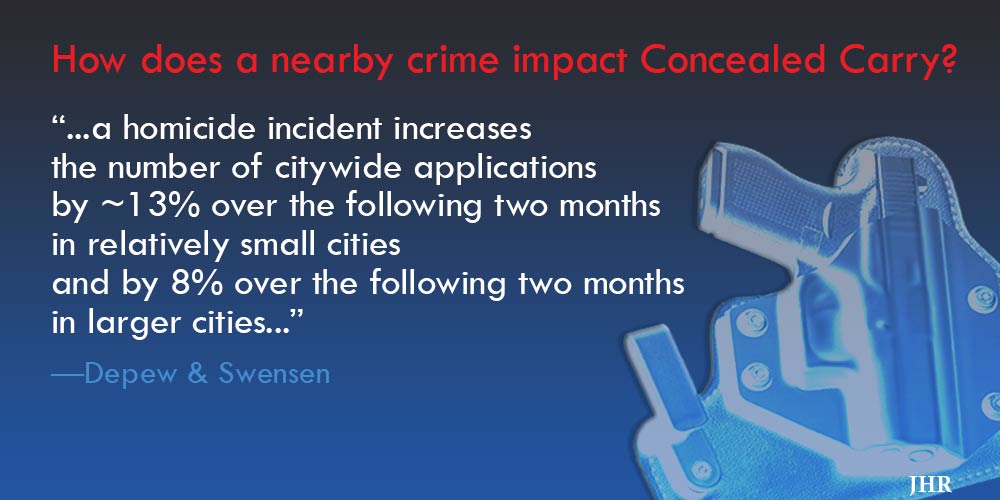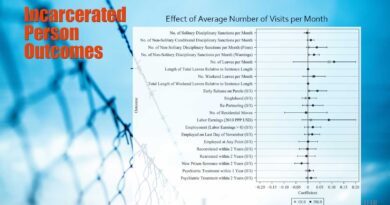Concealed Carry—Why Do We Apply?
Every U.S. state has a permit process to allow citizens to legally carry a concealed firearm in public. The implications of these laws have generated considerable interest from researchers and policymakers alike, but the underlying determinants of why people decide to legally carry a concealed gun have not been rigorously evaluated until now. Briggs Depew and Isaac Swensen wanted to know whether individuals respond to crime by applying for permits to legally carry a concealed firearm.
Depew and Swensen used unique concealed-carry application data from North Carolina that allowed them to compare the number of applications in months following a recent crime incident to months without recent crime incidents. They incorporated a methodology that allowed them to account for potential confounding factors, such as seasonal changes in crime rates and differences in crime related to city size and urban classification.
Their main findings show that individuals who reside relatively close to recent serious violent crime occurrences (i.e., homicides) apply for concealed-carry permits at a higher rate in the months following the crime incident. This finding is apparent in urban and smaller city settings in North Carolina.
Depew and Swensen see their work as contributing to a better understanding of when and why individuals choose to legally carry guns in public. “We provide evidence that proximity to recent serious crime plays an important role as individuals make decisions regarding legal gun carrying.” Depew and Swensen believe that their findings are relevant for policymakers when considering not only gun legislation, but also efforts to reduce crime as their results suggest that gun carrying is related to perceived public safety.
Read the full study in the Journal of Human Resources: “The Decision to Carry: The Effect of Crime on Concealed-Carry Applications,” by Briggs Depew and Isaac Swensen.
***
Briggs Depew is at Utah State University and IZA, and Isaac D. Swensen is at Montana State University.




